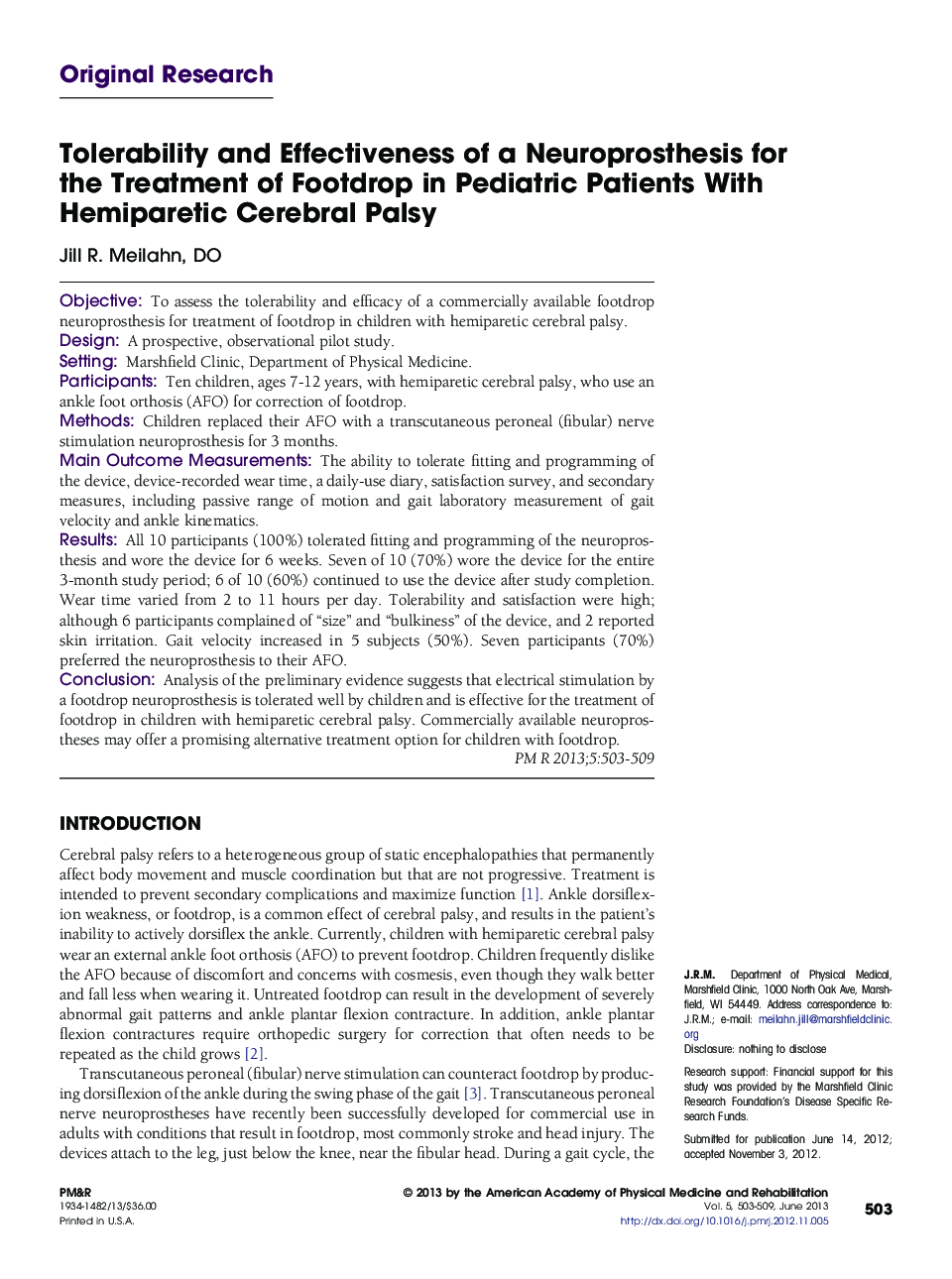| Article ID | Journal | Published Year | Pages | File Type |
|---|---|---|---|---|
| 2705595 | PM&R | 2013 | 7 Pages |
ObjectiveTo assess the tolerability and efficacy of a commercially available footdrop neuroprosthesis for treatment of footdrop in children with hemiparetic cerebral palsy.DesignA prospective, observational pilot study.SettingMarshfield Clinic, Department of Physical Medicine.ParticipantsTen children, ages 7-12 years, with hemiparetic cerebral palsy, who use an ankle foot orthosis (AFO) for correction of footdrop.MethodsChildren replaced their AFO with a transcutaneous peroneal (fibular) nerve stimulation neuroprosthesis for 3 months.Main Outcome MeasurementsThe ability to tolerate fitting and programming of the device, device-recorded wear time, a daily-use diary, satisfaction survey, and secondary measures, including passive range of motion and gait laboratory measurement of gait velocity and ankle kinematics.ResultsAll 10 participants (100%) tolerated fitting and programming of the neuroprosthesis and wore the device for 6 weeks. Seven of 10 (70%) wore the device for the entire 3-month study period; 6 of 10 (60%) continued to use the device after study completion. Wear time varied from 2 to 11 hours per day. Tolerability and satisfaction were high; although 6 participants complained of “size” and “bulkiness” of the device, and 2 reported skin irritation. Gait velocity increased in 5 subjects (50%). Seven participants (70%) preferred the neuroprosthesis to their AFO.ConclusionAnalysis of the preliminary evidence suggests that electrical stimulation by a footdrop neuroprosthesis is tolerated well by children and is effective for the treatment of footdrop in children with hemiparetic cerebral palsy. Commercially available neuroprostheses may offer a promising alternative treatment option for children with footdrop.
